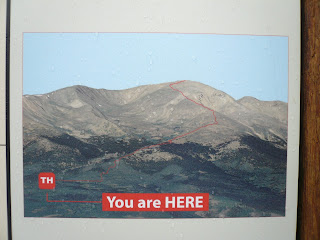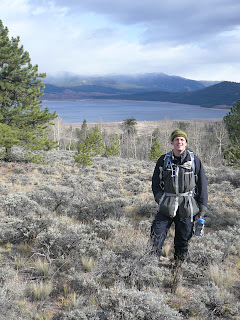Whitewater State Park
Altura, Minnesota
10/27/12
5.3km, 2 hours
70 Days to Africa
This past weekend found Deb and Greg driving an hour south of the Metro area to Rochester, MN where we connected with our friends Sara and Kevin for a hike in their neck of the woods. It was a beautiful day for a hike. The sun was shining and, though the weather could not exactly be called "warm," once the blood got pumping staying comfortable was far from an issue.
Whitewater State Park provided the challenging grounds and diverse terrain we sought for training purposes. Sara and Kevin provided the kind of company that we love to keep, and they were tremendous hosts and guides. The park features several projects completed by the CCC during the Depression. The building material of choice at the time appeared to be limestone blocks and the effort required to complete some of the projects must have been tremendous.
The first trail we traversed brought us across an impressive bridge over the Whitewater River. After we crossed the river, we went up a steep incline along the riverside that featured a sufficient number of steps. It was sufficient to leave a person winded, but not enough to send any of us tumbling back down the hill to the river below. Upon reaching the "summit", we found a great rock structure to take a break under and assess our preparedness to move on along the ridgeline.
Once we completed our first challenge, we moved across the rugged terrain and then followed a decline back down to the roadside of scenic Highway 74. We subsequently crossed the river and looked for our next challenge. We found it in the form of the Coyote Point trail. Our challenge on the Coyote Point Trail was compounded by several factors: First, we had to cross a floating bridge before heading up a steep and prolonged hillside to reach the bluff. The terrain on the incline was less rugged than the initial steps on the previous trail, but they were covered with damp oak leaves. The series of steps were also much longer than ones on the first trail. Several members of our four member crew either removed garments, or at least unzipped them, in the process of going up the hillside. To add to it, we were running short of time because we had told the babysitter taking care of Sara and Kevin's son that we would be back by a certain time. What was estimated as a two hour hike had to be done in an hour or less. That made for a power hike, which for Deb and Greg was excellent training for the challenge to come.
Once we made it to the bluff we found a prairie that appeared to have entered hibernation for the winter and moved into an Oak Forrest so full of leaves that we had to follow Kevin's natural hiking instincts to navigate the trail. It was a cool experience to be on a bluff overlooking the river and the surrounding farm land and having the sense that you are alone to enjoy it in peace. At one point the trail took us literally feet from the edge of the bluff and a glance over the side served as a good reminder of the potential hazards that could await a person who is not careful or aware of their surroundings. The trail's pinnacle was a a clearing in the woods with a generous vista of the bluff across the road. We imagined that the fall colors would have been majestic just a few weeks earlier. The final leg of the trail brought us down a steep wooden stairwell and another long series of steps to reach the parking lot where the vehicle was waiting for us.
In summary, the hike, the scenery and the company were all great. It was really fun to have some fresh faces and energy along on the hike. The couple of hours we spent on the trail, and the additional few hours we spent with Sara and Kevin, reminded us of how fortunate we are to have opportunities to connect with so many great people as part of this process. We will definitely need to keep that spirit and energy alive as we are making our way up the side of Mount Kilimanjaro.




























